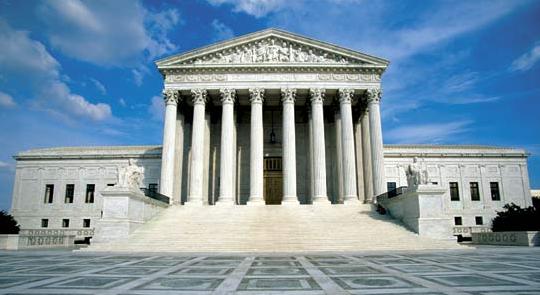As of May 17, 2013 high school ‘Vampire Groups‘, or ‘Vampire Cults‘ as they are referred to by the school administration in this mock case, have become a part of First Amendment: Social Media & Student Rights teaching materials written and provided by the Administrative Office of the United States Courts (USCourts.gov). In this fictional scenario student jurors are asked to apply the Supreme Court case of Hazelwood v. Kuhlmeier (a school newspaper censorship case from 1988) to a matter involving school officials “disallow[ing] the posting of certain student content on the school’s FaceLook fan page” by a group of students known as the “Fangtastics” of Forks High School (yes, they actually use Stephenie Meyer Twilight series references).
Activity Package (26 Page PDF) For Teachers & Students (Mock Trial/Classroom, et. al Use):
http://www.uscourts.gov/uscourts/educational-resources/get-involved/constitution-activities/first-amendment/social-media-student-rights.pdf
Links:
Fictional Scenario:
” … The Fangtastics perform plays in the community and do community service, including sponsoring a record-setting blood drive, at which they wear vampire costumes to promote the cause. As a result, The Fangtastics are selected by a student committee to perform in the school’s annual talent show. On the day of the show, the members appear at school in vampire costumes and makeup. During class, they stay in character and complain when they have to sit near classroom windows, since vampires are sensitive to light. During lunch, one of the members sips from a large glass jar filled with tomato juice labeled “Bloody Mary Skinners.” … The performance at the talent show is enthusiastically received by the student audience. The group decides to apply for club status, which would allow them to use the school theater and appear in the yearbook as an official club. Principal Mary Skinner denies the request after receiving reports about the members’ behavior on the day of the talent show. She suspects the group is becoming a cult and is concerned that the members will continue to disrupt the learning environment and even threaten the safety of the students, teachers, and administration. … ”
THE VAMPS v. PRINCIPAL SKINNER – Talking Points:
Affirmative:
” … Although school administrators must be given leeway to run a school efficiently, there is no evidence that the posting of the vampire satire and comments on the student wall would disrupt the learning environment. It cannot be assumed that the vampire postings would have been disruptive. … ”
Negative:
” … The postings on the student wall undermined Principal Skinner’s authority and promoted a vampire cult. The postings were critical of Ms. Skinner’s decision to deny recognition to a student vampire club as a legitimate school organization that can meet on campus, receive student body funds, and post its activities on the student wall. Ms. Skinner felt personally threatened by the postings of a group that she described as “centered on vampirism, a cult that promotes barbaric killing.” As a principal responsible for her students, Ms. Skinner was legitimately concerned about the safe and efficient operation of the school. …”
Testimony:
Randy Cullen: “Well, the trouble, actually, came after the Talent Show when we posted a satirical poem criticizing Principal Skinner’s decision to reject our application to be recognized as an official school club. She turned us down and accused us of being a cult. And she had the poem taken off the school’s web page. Essentially, she violated our First Amendment rights to freedom of speech and freedom of association.”
Poem:
If the school smears the Fangtastics with mud
We don’t have to put up with that crud
And Principal Skinner
Won’t be the winner
If her house is drenched in __[blood]__.
Randy Cullen: “It was just a joke, but Principal Skinner called me in and told me the Fangtastics are a dangerous cult. She said she took the poem as a personal threat. She had it pulled off the web page and banned all the members of the group from the website.”
Principal Skinner: “The group was first brought to my attention the morning of the Talent Show by Chris Black, one of my other students. As he described the group, I knew they were a cult.”
Defendant Attorney #3: “What did you do then?”
Principal Skinner: “I considered cancelling the group’s appearance in the Talent Show, but my concern was that pulling the performance would create a further disturbance. So I let the performance go on.”
Defendant Attorney #1: “What about the group’s behavior led you to describe it as a cult?”
Principal Skinner: “I have been trained to recognize indicators of cult associations and antisocial Behavior”





